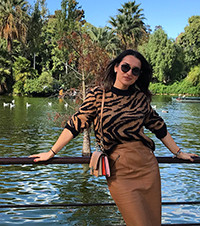
The Monastery of Pedralbes is a Gothic monastery. It is now a museum, housing permanent exhibitions on its own art and legacy as well as third-party special exhibitions from time to time. The old Saint Michael chapel is located next to the monastery. After renovation in 2018, it is reopened for public again. The monastery was founded by King James II of Aragon for his wife Elisenda de Montcada in mid-14th century. It housed a community of the Order of Saint Clare, mostly members of noble families. The queen gave the monastery a series of privileges, mainly because she spent a certain period of her life there. The most significant privilege was the direct protection of the city of Barcelona, through the Consell de Cent ("Council of the Hundred"), who had the task to defend it in case of danger, war or riots of any kind.
Besides the monastery, the queen also built a palace where she lived after 1327, following King James’ death. She lived there the next 40 years. The monastery was declared a national monument in 1991. It was built in white stone, initially it was defended by a line of walls, of which today only two towers remain. Cloister is encircled with walls from all four sides, each wall has 3 floors and it is actually a corridor in the open, with columns, and its primary purpose was for taking a walk. There are orange and palm trees in the garden, some of the trees are up to a hundred years old. There you may see the queen’s statue made of stone. In addition to that, there are beautiful glass works inside that complete the monastery’s beauty.
The Chapel of St. Michael houses several fresco paintings by Ferrer Bassa. They date back to the 14th century, and they show the influence of Italian painting styles. This building is one of the best examples of Catalan Gothics. The permanent exhibition is called “Divine murals”. Besides the chapel, dorm room, kitchen, and church you may also visit the building of a hospital that follows the Renaissance style. This building in a fine way depicts monks’ lives throughout history.
 Working hours
Working hours
closed on Mondays
Tuesday – Friday, 10.00 – 13.30
Saturday and Sunday – 10.00 – 16.00
 Entrance fee – 5 euros
Entrance fee – 5 euros
pensioners, students and pupils pay 3.5 euros.
Author of the text:

Maja Glavaš, Bachelor with Honours in Communicology. Works in Tourism.
Contact: [email protected]; instagram: travel_europe1